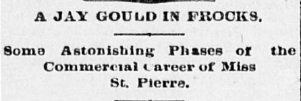The Naked Yowie Project

Contact

Home
The Wild Man, the Missing Dandy, and a Jay Gould in Frocks
21.04.2018
The capture of a wild man with long matted hair and very little clothing at Sweeten’s Cave near Jasper (reported on December 18, 1884)
created a sensation in Tennessee more so than previous “wild man” stories. It was thought that the captured wild man was John Neal
from a prominent family in Alabama who went missing from Anderson, Tenn., several months earlier. At the time of his disappearance,
Neal had been employed as personal secretary by a businesswoman of great wealth by the name of Miss Maud St. Pierre who was in the
process of purchasing and developing vast tracts of mineral land in Marion and Anderson counties. A reward of $1,000 (almost $25,000
in today’s money) was offered by Miss St. Pierre when extensive searches failed to find Neal’s whereabouts. This particular wild man,
then, could have been worth a lot of money to his captors.
It was rumoured that Neal had been suffering from delirium tremens
and had been hopelessly in love with his employer when he disappeared. Neal’s employer, Miss Maud St. Pierre, was also the subject
of many rumours – she was described as being a “mysterious character”, granddaughter of wealthy socialite
Myra Clark Gaines, and with
a personal worth of some $3,000,000 (over $70 million today) with which she would travel on horseback through the mountains with saddlebags
full of money. It had also been rumoured that Neal had been kidnapped for ransom and that St. Pierre, herself, had something to do
with his disappearance.
Seeking to build a railroad from Anderson Station, Tenn., to service her nearby mines, Miss St. Pierre
was in New York on business when she spoke to a reporter the next day. “The report concerning Mr. Neal, my secretary, and myself is
incorrect in some respects. There is nothing at all mysterious about me. I am simply a business woman. My success in business has
been a surprise to many people, who think a woman knows nothing of business, and on this account several stories have been started
about me.
“I employ fifty men whom I hire and pay personally and am compelled to be on horseback nearly all day, but I never
carry large sums about me and have never made the slightest claim to any relationship to Myra Clark Gains.” Determined to set the
record straight, St. Pierre reiterated, “There is nothing mysterious about me. I am a native of Louisiana, have been abroad, and am
in business to make money.”
On John Neal, St. Pierre side-stepped the rumour of their romance, “He belongs to one of the first
families of Alabama. He is a cousin of the late Wm. M. Lowe, member of Congress from Alabama, and is a gentleman in every respect.
He was employed by me as a secretary and had been with me about one year when he disappeared. He had been sick for a short time.
“On
June 8th he left his house at Anderson, about noon, and went to Glen, a short distance away. He was missed almost immediately, and
a party started in search of him. Not more than twenty minutes later the flowers of a button hole bouquet which he had worn were found
scattered over the rocks in Glen, but no other trace could be found. I used every means in my power to find him. Ponds were dragged.
All my men were included in the searches, and I hired detectives. A reward of $1,000 is still standing, and I would gladly pay it
for his recovery.
“How or why he disappeared I can’t say. I had sent him down to Anderson from Huntsville, fifty miles away,
to get money from the bank with which to pay the men, and it is possible that some ruffians may have known this and may have followed
and killed him, but I don’t know anything about it. There were five disappearances in six weeks at this time, all of persons living
within a radius of fifty miles.”
As for the recently captured Tennessee wild man, St. Pierre believed it could be Neal. “A number
of rumours of his having been seen have come to me from time to time. One coloured woman said she saw a man in ragged clothes run
in and out of a deserted church of Bennett’s Cave, which is six miles from Anderson. The woman is quite certain it was Neal;
she knew him well.” Search parties were promptly sent to the area but found no trace of the man.
“I believe the report that
he was found in Sweeten’s Cave is correct. The caves are so many and the paths in them intricate, that a person might easily hide
in them for a long time without being discovered. I think he is suffering from temporary aberration of mind. The story about his having
delirium tremens is entirely false, for he never was under the influence of liquor.”
Although what became of the wild man found
in Sweeten’s Cave is unknown, he certainly was not John Neal.
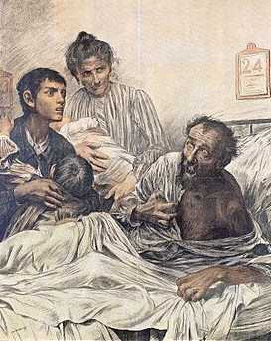
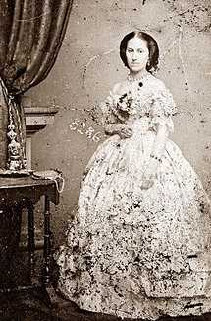
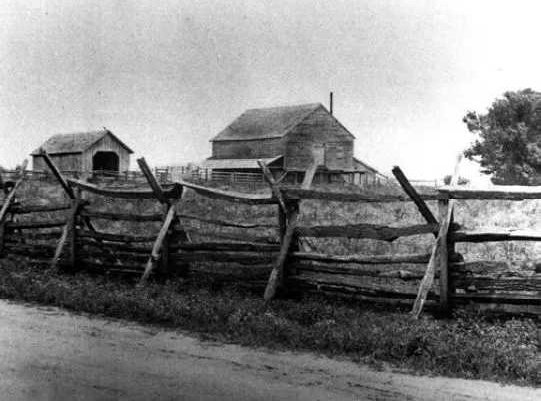
John Neal departed Anderson in the morning of Sunday, June 15th (not June 8th), to attend to business in Franklin on behalf of Miss
Maud St. Pierre, a wealthy business woman who had just purchased 22,000 acres of land. Neal was last seen at midday picking mountain
flowers by the side of the road, in the area of Glen just a few miles away. An extensive and expensive search conducted at the behest
of his employer found the flowers from his button-hole bouquet but no further trace of the man. A reward of $1,000 for his return
was subsequently offered by St. Pierre. A rumour circulating in the newspapers that Neal had been kidnapped for ransom does not seem
very credible. One thing was certain -- Neal had disappeared.
The rumour of some relationship between Neal and his employer,
however, did gain some traction. It was reported that in Memphis 10 months prior to his disappearance, Neal had procured a marriage
license to Maud St. Pierre but that it was returned unexecuted. A row presumably followed as the couple were ejected the next morning
from the luxury hotel in which they were staying.
In the following months the disappearance of Neal, St. Pierre continued to
conduct business and attract speculation. It was suggested that St. Pierre was from the nation’s political capital in Washington and
was thought that she was representing a company with capital stock of over $100,000. It was revealed that St. Pierre had purchased
more coal and timber lands in Anderson, Tennessee, and was plans on building a town with all modern conveniences to service them.
She was also in the process of supplying Chattanooga with the finest drinking water piped in from a nearby spring which she had also
just recently purchased.
Interviewed by a reporter in Oct, 1884, St. Pierre, is described as, “a rather tall, fine-looking lady,
with erect carriage, a keen eye and a perceptible something about her which unmistakably means business.” St. Pierre spoke briefly
of the disappearance of Neal and asked whether she was from England. “Oh, no; I was born in Louisiana, but having spent most of my
life abroad a great many people are of the opinion that I am English.” St. Pierre went on to reveal that she took charge of the family
business at the age of seventeen when her father died; her mother later passed away prior to her stay in Europe.
St. Pierre also
spoke of her plans to develop the land in and around Tennessee, to harvest timber to make colonies for disenfranchised white families
from the South who would provide labour rather than using cheap convict labour which she detested. She estimated the cost of such
projects at about $1,300,000 which, St. Pierre suggested, was still one tenth the cost of doing it in Washington or New York where
she preferred to spend the winter.
Indeed, St. Pierre was in New York in December of that year when the “wild man” thought to
be John Neal was captured. Neal’s whereabouts remained a mystery but St. Pierre continued ploughing ahead in business during 1885:
In
January it was announced that an extensive coal mine and marble factory were to be opened in Anderson, Tennessee, to be followed with
a bucket manufacturer, paint factory, blast furnace, and railroad.
Preliminary mining began in one of St. Pierre’s mountain properties
in March. On site general Manager, W. H. Lovell, was only waiting for Miss Maud’s arrival before commencing operations on a larger
scale. An article described St. Pierre as “probably the most independent woman in the world.” Called the “Coal Queen,” St. Pierre
reportedly owned nearly 300,000 acres of mountains and valleys and plains In Tennessee, Alabama, and Kentucky rich in coal, metals,
and other minerals. Even the horse St. Pierre used to ride over her domain was the sister of famous racehorse Maud S.
Back in
Tennessee in April, St. Pierre spoke enthusiastically to a reporter about her plans to build herself a residential cabin with Queen
Anne style interior on a mountain spur with superb views. She attributed her success to being “more intelligent” than most. “I hate
a lie and love fair dealing.” When she first arrived, labours were paid 25c per day in bacon but St. Pierre insisted, against advice,
on paying her men $1 per day in actual money and was proud to inspire the loyalty of her sixty employees.
Finally, in December,
St. Pierre was negotiating the purchase of 55,000 acres of land in Lawrence County, Tennessee.
The spotlight did return
to Maud St. Pierre when her former secretary and lover, John Neal, reappeared in April, 1888.
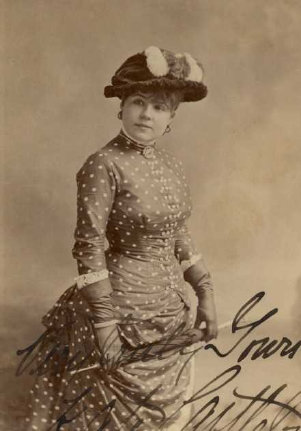
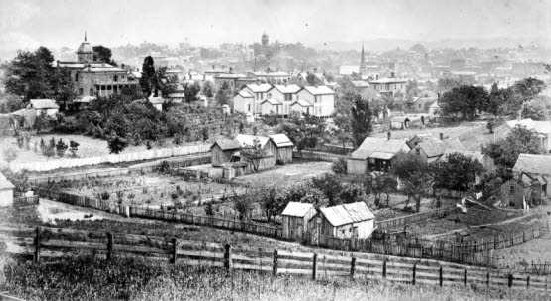
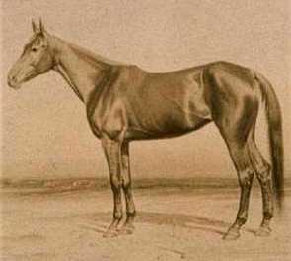
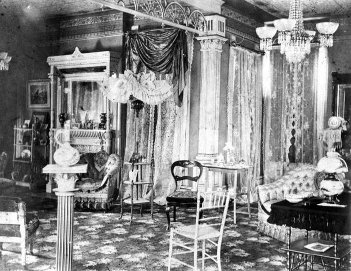

Robert McCallow was walking along a steep bluff in the mountains just to the east of Anderson, Tenn., in April, 1888, when he came
across a discarded shoe. Although weathered, the shoe was of good quality so he took it home to show his friend, Taylor Stephens.
The area in which the shoe had been found was rarely frequented by locals as it was particularly rugged and thick with vegetation.
Agreeing the find to be suspicious, they decided to search the area more thoroughly on the weekend.
On Saturday morning, after
less than an hour, the men came across a human skeleton lying in a very dense thicket. The bones were described as being in a “confused
state” but, nonetheless, were all there except the lower jaw. Not wanting to disturb the remains too much, the men marked the location,
removed the distinctive coat and, with the shoe found earlier, headed to the nearby station to notify the Colonel.
Colonel John
F. Anderson suspected that that he knew whose remains the men had found but called in some prominent locals for confirmation as McCallow
and Stephens were sent back to gather the skeletal remains in a small box. Dr. Keith arrived and recognized the distinctive silk lapel
on the coat front and Major Wall, who had just come in from Stevenson, positively identified the shoes, “as he once taken them out
of a place where they were left as security for drinks.” When McCallow and Stephens returned with the remains, four upper teeth found
plugged with gold confirmed their suspicions beyond a shadow of doubt – John Neal had been found.
The next day, Col. Anderson
spoke to reporters in order to give all the facts known concerning the disappearance of John Neal and the relationship existing between
him and Maud St. Pierre, “an alleged woman of wealth.”
On Wednesday, June 11th, 1883, “Maud St. Pierre came to my house and stated
that she was possessed of enormous wealth, and had made a trip to Anderson for the purpose of purchasing all of the vast ranges of
mineral land in that section. She added that her private secretary, John W. Neal, and a geologist, Col. Walls, would also want accommodation,
as they were in her employ, and she wished them near. They were admitted as guests of the Anderson mansion.
“Miss St. Pierre
was about thirty-five years of age, and claimed to be an English lady of vast wealth and unlimited resources. She negotiated with
Colonel Anderson and bought from him 1,400 acres of mineral land, the price being $6 per acre. She gave him a check on a bank at Huntsville,
Ala., for $150, to hold an option for ten days.
“Major Wall, of Stevenson, Ala., was engaged, presumably by Miss St. Pierre,
as a geologist, but on his arrival at Anderson he was really a nurse to attend and wait on her alleged private secretary, John W.
Neal. Major Wall was with Neal for only a day when the latter had a bad case of delirium tremens, and Miss St. Pierre gave Wall leave
of absence.
Col. Anderson described Neal as being in a pitiful state. “Miss St. Pierre clung to him through all his illness,
which she explains as follows: She was engaged to be married to
Hon. William Lowe, of Alabama. Before their marriage could be celebrated,
Congressman Lowe died, and Maud, heart-broken, determined to take under her protection the favourite nephew of the Congressman, no
other than John W. Neal, of Huntsville, Ala.”
Then on Sunday morning, June 14, 1883, a great sensation was created by the mysterious
disappearance of John Neal. Neal left Col. Anderson’s residence, going east, on Sunday morning. He met several farmers, who asked
him where he was going. Neal had replied that he was going to Huntsville, but it was noticed that he was going in almost a directly
opposite direction to that city. Skilful detectives later searched every conceivable place within five miles, but no trace was ever
found of the missing secretary until now.
“The silly rumour that he was murdered is untrue,” Col. Anderson continued. “The facts show
that he crawled into this thicket and, in a choking fit of delirium, died. His body was found just one mile from his last disappearance
from human eyes.”
The spotlight then turned to Miss Maud St. Pierre. “The lady who has been so prominent in this case was last
heard from in Florida, but her whereabouts during the past three years has remained an impenetrable mystery.”
Where was Maud
St. Pierre? And, more importantly, who was she really?
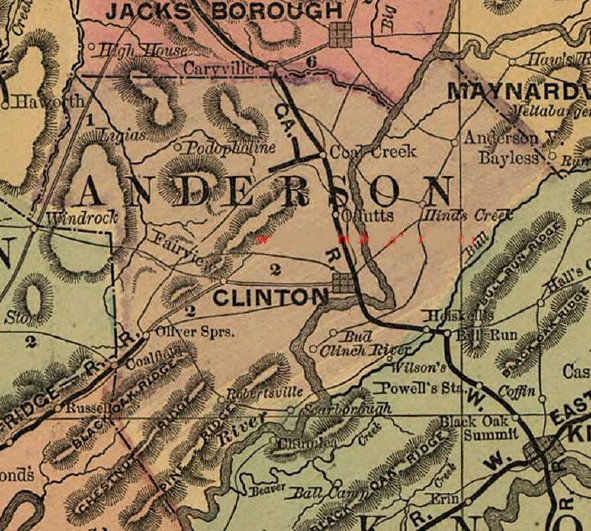

It is evident that Maud St. Pierre did have money – just not the vast amounts she claimed and was rumoured to have. The $150 cheque
St. Pierre paid Col. Anderson in June, 1884, towards the initial purchase of his land in Franklin County was sent to the bank at Murfeesboro
and, after corresponding with the Huntsville bank, was initially refused. Anderson, however, was mollified when he later collected
$700 as down payment for the land from St. Pierre. While staying in Anderson, St. Pierre was reported to have spent some $1,500 as
she sought to buy more land and as payment in wages for the extensive search for her lost secretary. Those who have had dealings with
Miss St. Pierre at this time claimed that she was very prompt in her engagements and able to carry them out. However, the large contracts
she negotiated, embracing thousands of acres across three states, were all eventually defaulted.
St. Pierre, accompanied by Maj.
W.J. Whitthorne Esq., was in Kentucky in December, 1885, negotiating to buy more land. It is after this time that her whereabouts
became a mystery.
After the remains of John Neal had been found in April, 1888, local reporters began the search for St. Pierre.
It appears that sometime in 1886, she went to Milton, Florida, where she continued the ruse of being a “woman of affairs.” After a
short stay, St. Pierre departed on a short journey in order to conduct further business but did not return. She left several heavy
trunks behind, and as the bill for her board was unpaid, the trunks were opened and found to contain nothing but wood.
In January,
1887, St. Pierre appeared in Escambia County, Florida, to take charge of a school in the town of Brooklyn but failed to get the desired
position. For the next 15 months, St. Pierre lodged with a couple who were struggling financially but she paid no rent, while continuing
to negotiate to buy large tracts of timber land In Conecuh and adjoining counties. No money was passed, however, and when the payments
were due the contracts were again forfeited. To settle her board bill, St. Pierre presented a draft on behalf of Col. Cranston, of
Washington, but asked that it not be presented before June, the following year.
After Col. Anderson’s revelations following the
retrieval of Neal’s remains, St. Pierre moved to a point in the woods fifteen miles east of Brewton, Alabama, seeking seclusion among
the poor and illiterate. The residents of Conecuh received the impression that she was in hiding as if from some terrible crime, but
those who had been fortunate enough to question St. Pierre about her past received no statement in reply.
St. Pierre’s secrets
remained intact. The final words printed about Maud St. Pierre at that time were, appropriately: “Who is she?”
___
It’d be easy
to dismiss Maud St. Pierre as nothing but a con-artist having presented herself as something she was not and engaging in business
beyond her means. Yet the more I examine the archives and consider her story the less inclined I am to do so.
So St. Pierre
was not a wealthy businesswoman and the big business deals she negotiated ended up forfeited – so what? What money was lost was her
own. While the details of St. Pierre’s own life that she shared, like the various rumours she attracted, were a mixture of history
and fiction – the information that is corroborated seems to stand out and it indicates that she was an otherwise good person who acted
with the best of intentions.
In the online newspaper archives I was able to access, Maud St. Pierre first appeared in the town
of Martin, Tenn., in the fall of 1878 offering her services as a nurse during an outbreak of
yellow fever. Entirely without means,
St. Pierre stayed with several families of Martin and quickly became a popular and appreciated figure in town.
In the summer
of 1879, Memphis was suffering a terrible outbreak of yellow fever. The city had been decimated – 5,000 of the 40,000 residents died
while another 20,000 residents, those who could afford it, fled. A wealthy Martin citizen furnished with the means to travel to Memphis
to continue nursing the sick which she did.
In early December of that year, St. Pierre, recognized for her contribution, travelled
to Washington D.C. with Mary Eliza (Dillingham) Land (wife of
Judge Thomas Thompson Land) and daughter. They stayed at
Dumbarton House.
In March, 1882, still in Washington, Miss St. Pierre was entertaining prominent citizens and foreign dignitaries with her musical
prowess and may have already been in a relationship with the widower, Congressman William Manning Lowe of Huntsville, Ala. Lowe, a
former Confederate officer who served with distinction, was well supported by Alabama independents and Republicans and had positioned
himself as the candidate of the “common man” – a position with which St. Pierre, herself, identified. By June she was associated with
the temperance movement and corresponding with other prominent Americans seeking to improve society.
Whether St. Pierre was
actually engaged to the Congressman or not, when Lowe died in October while in his home at Huntsville, St. Pierre was once again without
means -- having connections but no standing or wealth. It is significant that St. Pierre first sought to buy land in Lowe’s homeland,
Huntsville.
Lowe’s wayward nephew, John Neal, seemed to have adored her and St. Pierre was not without affection for him. Despite
her protestations to the contrary, Neal did seem to have a big problem with alcohol. Given her association with the temperance movement
she may well have been trying to ween Neal of his addiction at the time of his disappearance. St. Pierre spent much money to search
for Neal when he went missing and paid her employees generously and promptly. She had planned to develop the land for the betterment
of struggling Southern families.
Besides the questions of who she was before the outbreak of yellow fever in 1878 and what ultimately
became of her after 1888, perhaps the real mystery is how St. Pierre obtained enough money between October 1882 and June 1884 in the
first place to begin her ruse as a "
Jay Gould in frocks"...
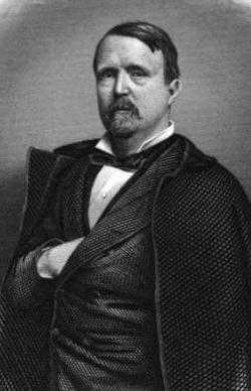
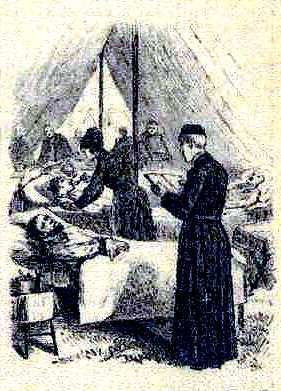
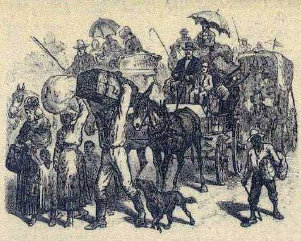

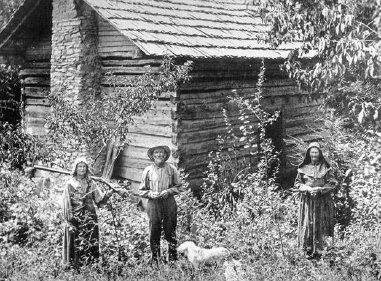
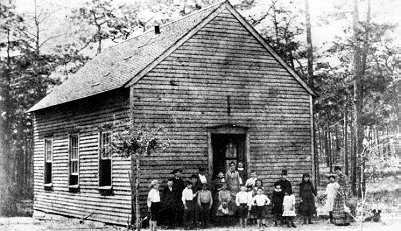
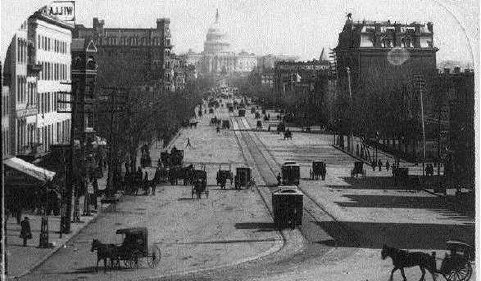



miss st. pierre
maud st. pierre
I first came across this story while searching for the Tennessee Wild Man. Turns out there are several but this one had the most interesting back-story. Originally posted by me in the "Unexplained Mysteries" forum, I have made a couple of corrections. Ed.
